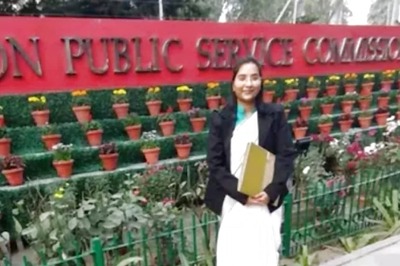
views
The Indian Space Research Organisation (ISRO) chief K Radhakrishnan has invited players from the space technology industry to take a greater role in producing operational and communication vehicles, while ISRO can foc u s o n ‘ f u t u r i s t i c challenges.
’“I expect a reversal of roles in the future.
ISRO would like to sit on one side and look at Indian Space Industry Consortia take leadership in niche areas of operational and launch vehicle systems,” said Radhakrishnan at the inauguration of the 3rd Bangalore Space Expo on Wednesday.
On the recent success of the PSLV C21 launch, Radhakrishnan said that 80 per cent of the value addition in PSLV today is done by the Indian industry.
“In the future, operational launch vehicles such as the PSLVs, GSLVs and GSLV Mark III could be produced by the industry, starting from basic raw materials to actual launch,” he said, adding, “the manpower at ISRO could focus on more challenging, futuristic activities.
” “If we don’t do that we’ll feel the pinch after a decade.
It is essential to get this into a production regime, where we can focus on cutting-edge research,” he said With another 10 missions lined up until September 2013, Radhakrishnan said that ISRO and the Indian industry consortia could perform that many missions in a year.
“We are looking at a target of 10 to 12 missions a year,” he informed.
Future Missions
ISRO’s 101st mission, the launch of GSAT 10, is scheduled to take place on September 22 at 2.
30 am from French Guiana and will be telecast live on Doordarshan.
Radhakrishnan said: “We are going to French Guiana for the launch as GSAT 10 weighs 3.
4 tonnes, which cannot be carried by our PSLV or GSLV.
” Following this, the launch of Saral navigational satellite with PSLV C20 has been scheduled to take place on December 12.
The assembly of the satellite will be done in 25 days at Sriharikota, he said.
“GSAT 7 and INSAT 3 satellites have undergone successful space simulation tests and are going to be launched next year.
The much-awaited GSLV D5 is in the engineering stage.
It could be launched in January or February next year.
The GSAT 40 communication satellite will also be ready,” Radhakrishnan said.
Radhakrishnan added that tests and characterizing of the vehicles’ performance in difficult atmospheric conditions without active cryogenic phase would happen in the second or third quarter of 2013















Comments
0 comment